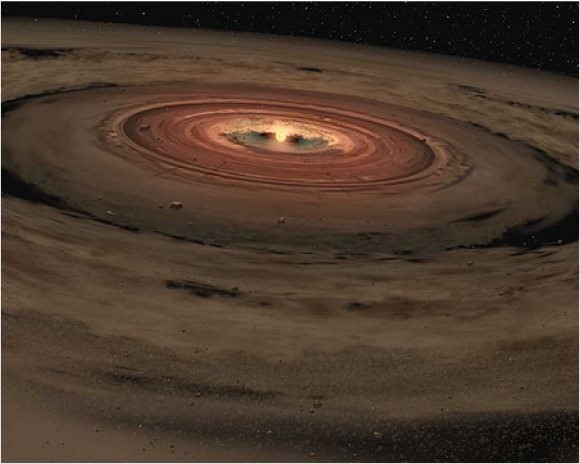We live on a planet that never stops moving. From our perspective, the sun rises and sets, stars traverse the night sky, all thanks to Earth’s constant spin. But have you ever paused to consider why our planet is in perpetual motion? It’s a fundamental question that delves into the very origins of our solar system and the laws of physics that govern celestial bodies.
The Earth’s rotation isn’t unique; in fact, most objects in our solar system, including the Sun, are also spinning. Look at our cosmic neighborhood from above, and you’d observe a predominantly counter-clockwise rotation for Earth, the Sun, Mars, and the majority of planets. This consistent direction isn’t just a coincidence; it’s a clue to a shared origin story.
Billions of years ago, approximately 4.54 billion to be more precise, our solar system began forming within a vast cloud of hydrogen gas and dust. Imagine something akin to the Orion Nebula, a stellar nursery where new stars and planetary systems are born.
This cloud, however, wasn’t static. A catalyst, likely a shockwave from a distant supernova explosion, disrupted the equilibrium and initiated a gravitational collapse in a region of this cold gas. As gravity pulled the material inward, something remarkable happened: the cloud started to rotate.
But why did it begin to spin? The answer lies in a fundamental principle of physics known as the conservation of angular momentum.
Consider the individual atoms within the primordial hydrogen cloud. Each atom possessed its own inherent momentum as it drifted through space. As these atoms coalesced under the force of gravity, their individual momentums didn’t simply vanish. Instead, they averaged out. While theoretically, they could have averaged out to perfectly zero rotation, the probability of such a perfect cancellation is astronomically low.
Therefore, a residual amount of angular momentum remained. Think of a figure skater drawing their arms inward during a spin. By reducing their radius, they spin faster. Similarly, as the proto-solar system collapsed and contracted, conserving its averaged-out angular momentum, it began to spin increasingly rapidly. This acceleration of spin due to contraction is the conservation of angular momentum in action.
As the nascent solar system spun faster, it flattened into a disk-like shape with a dense bulge at its center. This disk structure is a common sight throughout the universe, observed in galaxies, around black holes, and even in more mundane settings.
From this central bulge, our Sun was born. Further out in the swirling disk, planets coalesced. These planets inherited the rotational motion from the overall spin of the solar system itself. Over hundreds of millions of years, the material within the solar system aggregated to form planets, asteroids, moons, and comets. Eventually, the young Sun’s powerful radiation and solar winds cleared away the remaining debris.
Once formed and set in motion, these celestial bodies continued to spin due to inertia. Inertia, in this context, is the tendency of an object to resist changes in its state of motion. Without any external, unbalanced forces acting upon them to halt their rotation, the Sun and the planets have maintained their spin for billions of years. They will continue to rotate far into the future, until perhaps a collision with another cosmic object disrupts their motion in the distant future.
So, to revisit the initial question: Why does the Earth spin?
The Earth spins because it originated within the accretion disk of a collapsing hydrogen cloud, driven by gravity and the imperative to conserve angular momentum. It continues to spin today because of inertia, the enduring legacy of its formation. And the consistent direction of rotation across our solar system? That’s a testament to their shared birth within the same solar nebula, billions of years ago.


